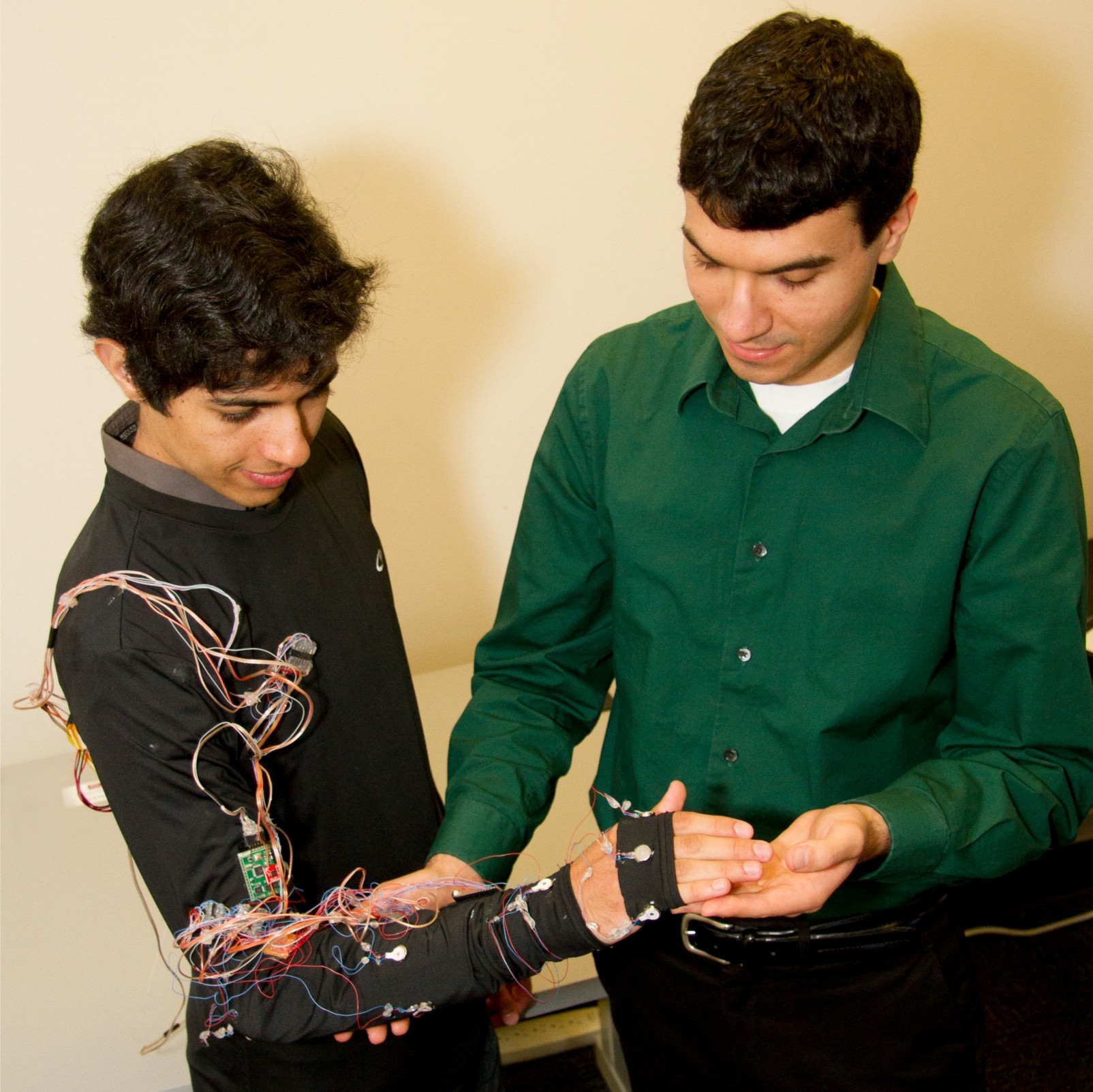
Vibrotactile-Based Motor Learning
Members
Dr. Sethuraman "Panch" Panchanathan
Dr. Sethuraman "Panch" Panchanathan
Every day, our body performs complex motor movements, even during the simplest of physical tasks, often without conscious thought. The movements involved in new motors skills are typically learned through audiovisual instruction, sometimes with direct physical contact from an instructor. However, this type of instruction is limited when vision and/or hearing are not available for use such as with disabilities (vision and/or hearing impairments) or limited attentional resources due to noisy environments. Moreover, in certain situations, vision and/or hearing may not be appropriate for use. For example, in a public place, audiovisual cues may distract those around us. To overcome these limitations, we propose vibrotactile stimulation to both instruct and guide movement, where vibrations replace 'nudging' found in instruction through physical contact. We hypothesize that real-time movement instruction and feedback through vibrotactile stimulation will enhance learning of complex motor skills, particularly in environments where vision and hearing are overloaded or unavailable. This work is an application extension of our research project on the building blocks of haptic communication, i.e., haptic phonemes.
Funding Sources
GPSA Research Grant awarded by Arizona State University Graduate and Professional Students Association, the Graduate College, and the Office of the Vice Provost for Research





